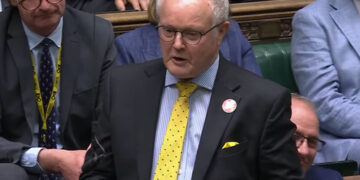Wokingham Borough Council has rejected several recommendations published in a safety audit of the controversial California crossroads junction.
The ‘independent’ audit was carried out by WSP, the company responsible for the installation, in October 2024, with the results published late last month.
Officers from the council were present, along with Thames Valley Police, on two separate visits, during which activity around the junction was monitored.
While a number of recommendations of the audit have been accepted by council officers, the introduction of “.. appropriate mini-roundabout central island road markings .. “ was rejected.
The audit team suggested that circular central islands and arrow markings could reduce “driver confusion” and “.. provide a more conventional junction layout.”
This would also “.. encourage road users to give way to the right at the ‘roundabout’ entries.”
Rejecting the recommendation, council officers said: “The auditors have noted ‘During the site visit, it was observed that motorists were generally using the junctions like mini-roundabouts (i.e., they were giving way to the right when entering the junction from one of the approaches),” which suggests that the junction is operating as intended.
“Adding a roundel might detract from the current scheme approach.
“However, it is recommended to further monitor the operation of the junction to determine if there is consistent adherence to the auditors’ observations.
“If it is found that further clarity at the junction could be beneficial, a roundel feature could be created.
“To create a roundel feature, we could overlay some of the coloured leaves with white ones of the same size at the centre. This would also make the junction more consistent with the signing.”
Officers also rejected a recommendation to include pedestrian footway markings at the rear of the parking area directly adjacent to the shops.
This, it said, would encourage pedestrians to travel through this area away from the locations where vehicles will be turning into or out of the parking bays.
Officers rejected the suggestion, saying the design conforms to standards for shared use spaces.
The council said it will continue to monitor the junction.
The report noted: “During the daylight site inspection, the traffic volumes on all approaches to the junction were high,
although only minor queues (two or three vehicles) periodically were observed.
“There were significant pedestrian movements at the junction, with pedestrians mostly crossing the carriageway using the new pedestrian crossing facilities.
“Low numbers of cyclists (less than 10 throughout the entire site visit) were observed travelling through the scheme extents, although three cyclists were observed travelling on the footway on the south side of Nine Mile Ride.
“During the darkness site inspection, the traffic volumes on all approaches to the junction were
relatively low, and there were low numbers of pedestrians travelling through the scheme extents.
“No cyclists were observed.”
The report noted that Personal Injury Collision (PIC) data from Wokingham Borough Council for the 36 month period between April 2021 and April 2024 (before the scheme was constructed) showed no PICs occurred within 100 metres of the junction.
Cllr Martin Alder, Wokingham Borough Council’s highways executive, described the junction as “.. a piece of infrastructure we can all be proud of” at last month’s full council meeting, noting how the junction had become a “tourist attraction” that “.. had not gone unnoticed by the national press.”
Cllr Peter Harper also presented a 1,300-strong e-petition from residents, asking for changes to the junction in line with the Highway Code.
Several minor changes look set to be made as a result of the audit, which include clearer signage.













































